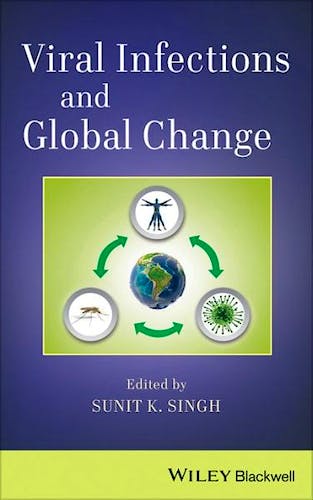

No hay productos en el carrito



Viral Infections and Global Change
Singh, S.
1ª Edición Noviembre 2013
Inglés
Tapa dura
736 pags
1400 gr
null x null x null cm
ISBN 9781118297872
Editorial WILEY
LIBRO IMPRESO
-5%
166,52 €158,19 €IVA incluido
160,12 €152,11 €IVA no incluido
Recíbelo en un plazo de
2 - 3 semanas
LIBRO ELECTRÓNICO
-5%
146,63 €139,30 €IVA incluido
140,99 €133,94 €IVA no incluido
Acceso On Line
Inmediato
Description
Emerging, Reemerging Viral Infections and Climate Change is a timely look at the impacts of global warming on the spread of infectious disease. As average world temperatures continue to rise, current climate change scenarios suggest that there will be a significant increase in the areas suitable for vector-borne viral transmission to humans. Viral Infections and Climate Change offers detailed descriptions of the epidemiology, molecular pathogenesis and host pathogen interactions of a variety of these viral threats, as well as discussion of a host of other factors in the spread of infectious disease. The introduction of microbes and vectors through increased trans-boundary travel, and the expanding prevalence of drug and pesticide resistance are just a few of the trends generating concern about emerging and re-emerging viral infections.
With up to date information on the clinical aspects as well as the basic science of major human viral hemorrhagic fevers, Emerging, Reemerging Viral Infections and Climate Change will be a useful resource for professionals in biology medicine, and veterinerary science working in ecology, environmental management, climatology, neurovirology, virology, and infectious disease.
Table of Contents
1. The arrival, establishment and spread of exotic diseases: patterns and predictions.
2. Epidemiological processes involved in the emergence of vector-borne diseases:
West Nile fever, Rift Valley fever, Japanese encephalitis and Crimean-Congo
haemorrhagic fever.
3. Impact of climate change and other factors on emerging arbovirus diseases.
4. Global climate change and the emergence/re-emergence of infectious diseases.
5. Disease emergence from global climate and land use change.
6. Influence of climate change on mosquito development and mosquito-borne diseases
in Europe.
7. Challenges in predicting climate and environmental effects on vector-borne
disease episystems in a changing world.
8. Climate and vectorborne diseases.
9. Tick-borne encephalitis virus, ticks and humans: short-term and long-term
dynamics.
10. Common themes in changing vector-borne disease scenarios.
11. Impacts of biodiversity on the emergence of Infectious Diseases
12. Exotic emerging viral diseases: progress and challenges
13. Advances in detecting and responding to threats from bioterrorism and emerging
Viral Infections
14. The arrival, establishment and spread of viral infections: patterns and
predictions
15. Transmission cycles, host range, evolution and emergence of arboviral diseases
16. Advances in detecting and responding to emerging infectious disease
17. Emerging Viral Infections of the Central Nervous System
18. Influenza: old and new threats
19. Animal Migration and Infectious Disease Risk
20. Challenges in predicting climate and environmental effects on vector-borne
disease episystems in a changing world
21. Climate change and health: global to local influences on disease risk
22. Social and environmental risk factors in the emergence of infectious diseases
© 2026 Axón Librería S.L.
2.149.0